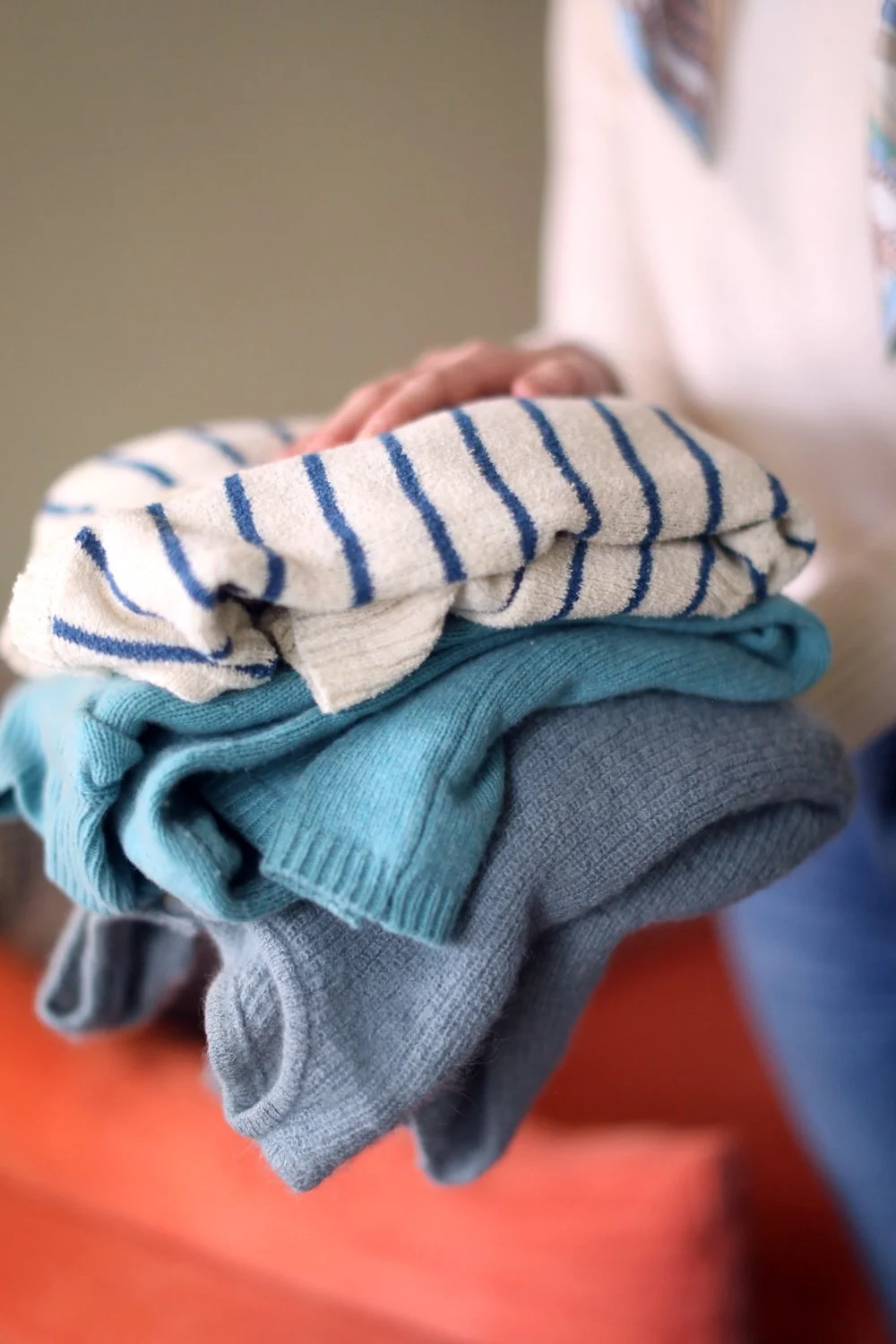Sweater Care & Repair
There’s great comfort in wrapping yourself in the warmth of your favorite cozy sweater on a cold winter day. For me, it’s like a security blanket. However comforting your favorite sweater can feel, it may need some coddling along the way to keep it fresh for many winters to come. Read on to learn more about sweaters and how you can keep them in your closet longer.
The Basics About Sweaters
While sweaters themselves are centuries old, they were first only viewed as functional garments meant to provide warmth for particular professions or communities. They were not considered part of the fashion world until the 1920s. Here are some basic facts about sweaters as we know them today:
Sweaters are in the knitwear (or “knits”) category. This means that they are made from one continuous piece of yarn looped together
Sweaters are usually made from a type of wool but can also be made from cotton, linen, synthetic fibers like acrylic, or a blend of these
Wool is a natural fiber that comes from a mammal, most commonly sheep. Other common wool sources include goats, rabbits, and camels
Cashmere can only be classified as such if it comes from the Kashmir goat. (It’s like the champagne of wool!)
In the United Kingdom, sweaters are called “jumpers”
Sweater Care & Repair
Because of the specific fibers as well as the way they are constructed, there are some specific ways to care for and repair your sweaters to keep them lasting longer:
DO remove pills with a sweater comb or a sweater shaver. Note: Most sweaters made of natural fibers like wool or cashmere will pill at some point, even the expensive ones
DO NOT hang your sweaters. This can cause them to permanently stretch or become misshapen, especially in the shoulder areas
DO launder your sweaters before storing them to prevent moths. Moths are very attracted to unwashed items. (Read more moth prevention tips)
DO NOT cut pulled threads on your sweaters. One cut thread can cause the entire sweater to unravel
DO have your sweater holes repaired by a skilled professional. Reweaving or reknitting is a specialized skill and is recommended for the longest-lasting and quality results. (We recommend companies like Without a Trace or Invisible Reweaving; both are available to ship your garments)
DO read the care labels. Most sweaters need to be hand washed or dry-cleaned
DO NOT dry your wool sweaters in the dryer (unless you want them to shrink to fit your toddler). Lay them flat and let them air dry
Whether it’s a cardigan, turtleneck, or cable knit, caring for your favorite sweaters properly means keeping them longer—and in turn being more conscientious and sustainable! We promise that cashmere only gets softer and cozier over time!

